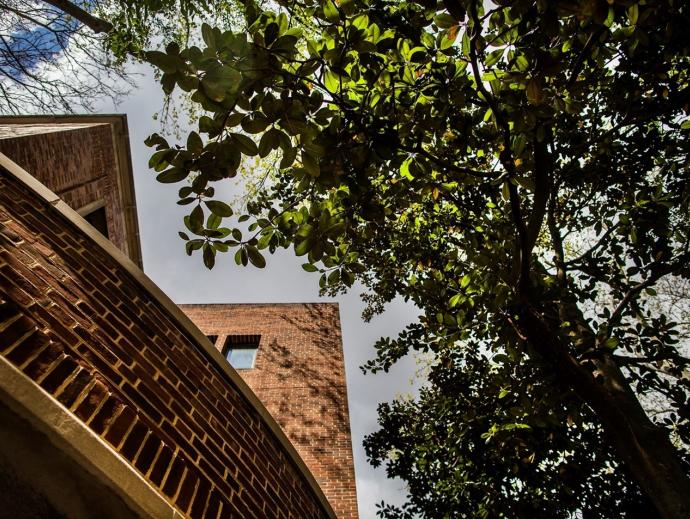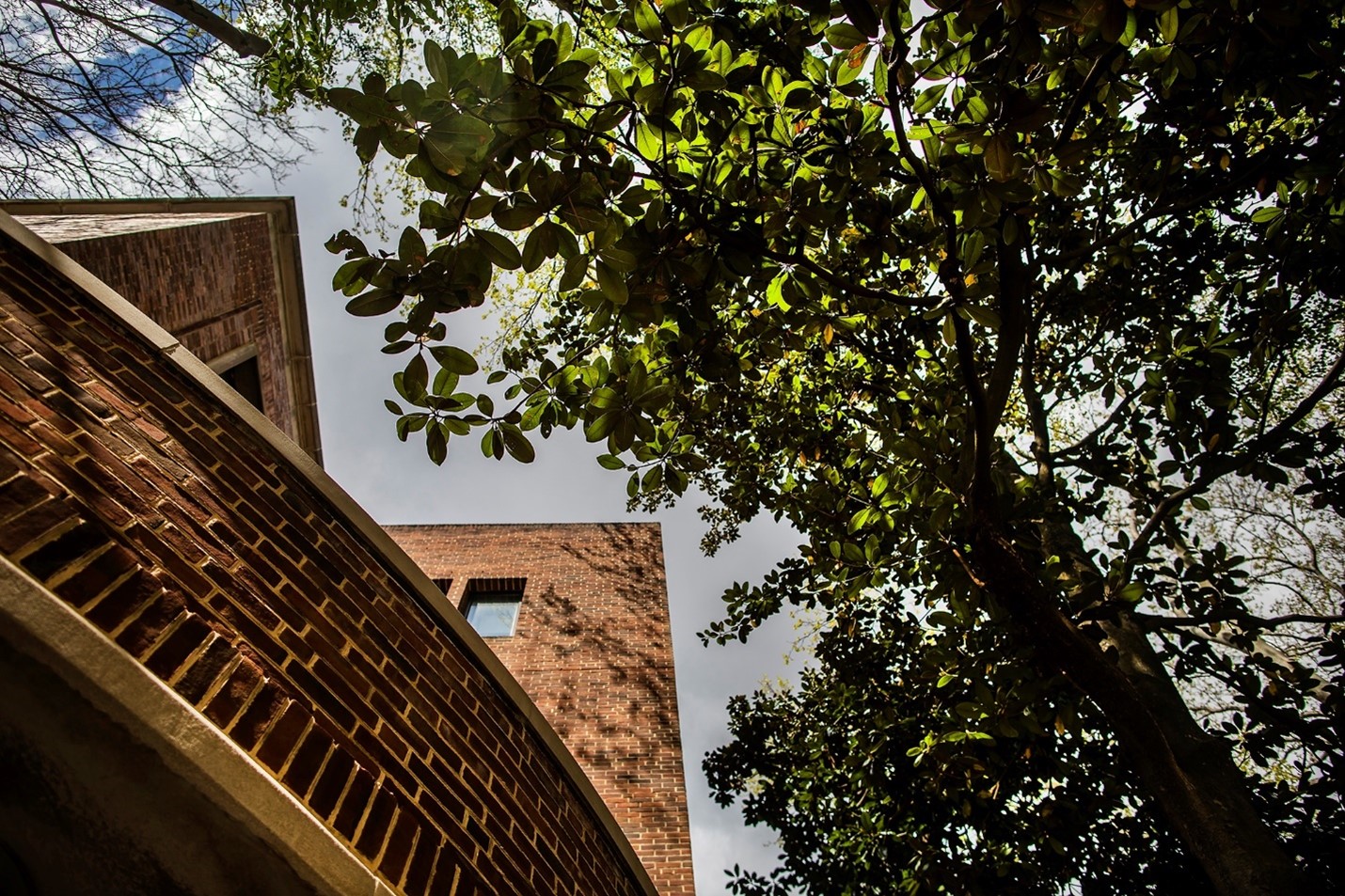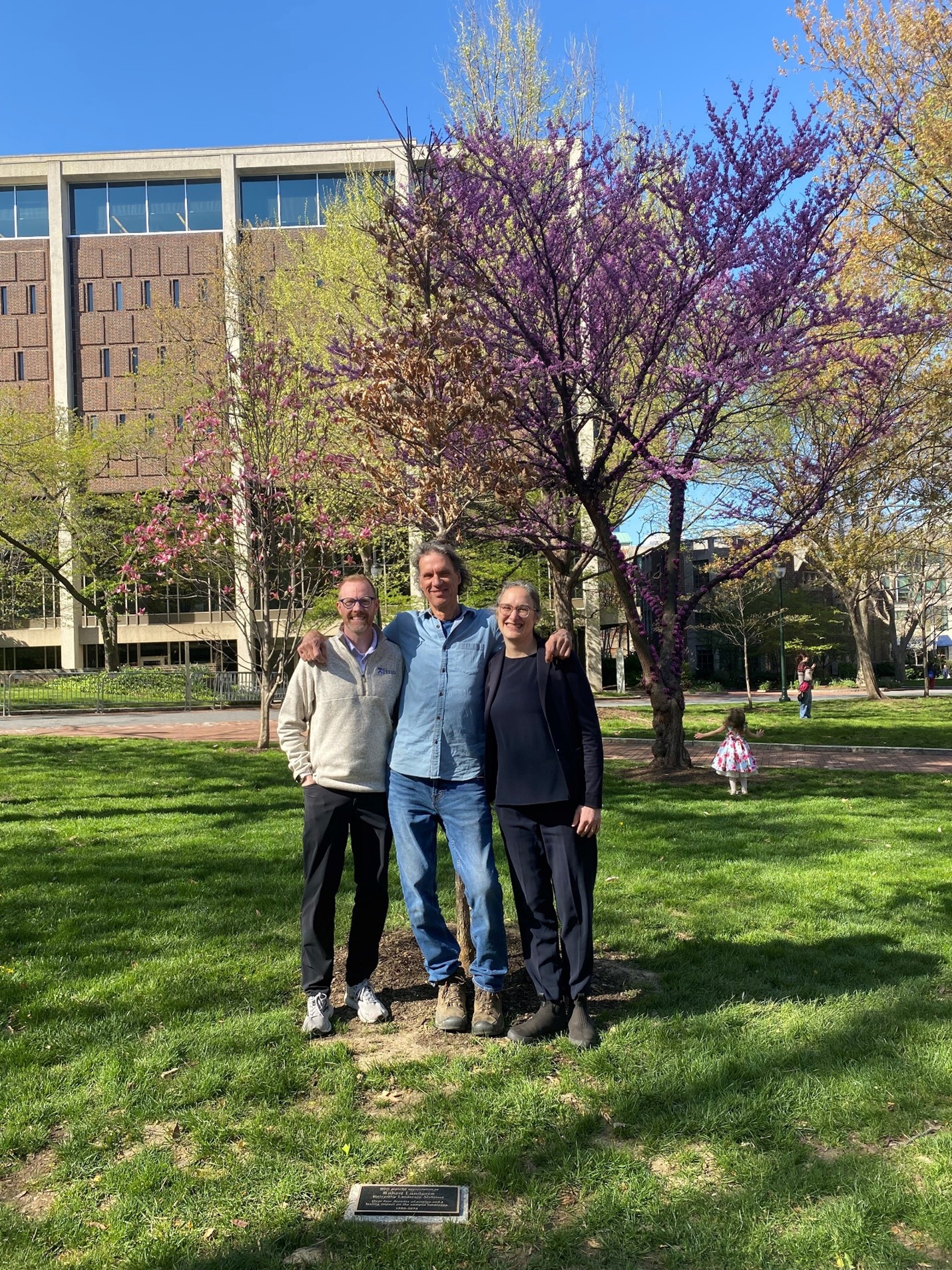Five Facts to Know About Penn's Trees on Arbor Day

Our tree canopy has a rich history, provides environmental benefits, and makes our campus feel welcoming and beautiful--learn more about what makes our trees special this Arbor Day.
Five Facts to Know About Penn's Trees on Arbor Day
Our tree canopy has a rich history, provides environmental benefits, and makes our campus feel welcoming and beautiful--learn more about what makes our trees special this Arbor Day.


Five Facts to Know About Penn's Trees on Arbor Day
Arbor Day is the perfect time to celebrate spring’s blooms on the University of Pennsylvania's campus. Not only is our West Philadelphia campus officially designated an arboretum with around 6,800 trees, more than 240 species of trees and shrubs, and over ten specialty gardens but also our tree canopy has a rich history spanning more than 150 years.
It wasn’t always the verdant oasis it is now, though, as city streets used to cut through campus instead of the pedestrian walks lined with greenery we see today. The transformation began in the late 1800s with the creation of spaces like the James G. Kaskey Memorial Park and a number of key street closures that transitioned to public walks. In 2025, five facts show just how special our trees are.
1. This is Our Sweet Sixteen as a "Tree Campus"
Penn is celebrating its 16th year as a recognized Tree Campus by the Arbor Day Foundation. This prestigious designation is awarded to institutions that demonstrate a commitment to effective urban forest management. Penn's efforts include maintaining a tree advisory committee, implementing a campus tree care plan, and engaging the student body in service-learning projects. These initiatives not only enhance the campus environment but also foster a culture of sustainability among students and staff.
2. We Plant Nearly 100 New Trees Yearly, and Have Piloted the Use of Innovative Soil that Contains Recycled Glass
While traditional tree planting uses sand and gravel in the soil mix for drainage, the extraction of sand is not always sustainable and can disrupt sensitive ecosystems. Penn is part of a joint project with local companies and design consultants to create a solution with a new resource: sand made from post-consumer recycled glass. This sand substitute can then be combined to create a new soil mix also using locally composted materials and biochar, which is a common product used to improve water retention. In the fall of 2024, the new soil mixture was used in the pilot planting of 13 new street trees on the school's campus with the hope that it will keep the trees healthy and prolong their lives.

3. Our Urban Trees Receive Specialized Root Care
One of the biggest threats to urban tree health is stem girdling roots (SGRs), which can strangle trees by cutting off sap flow. At Penn, the Morris Arboretum & Gardens Urban Forestry Consultant team works hard in collaboration with Penn’s landscape team to remove these harmful roots. Using mapping software, they track and monitor trees with SGRs to complement tree care. This proactive approach has saved trees from decline and extended their lifespan, showcasing the University's dedication to tree health.
3. An Earth Day Icon Planted Magnolias on Campus
Several magnolia trees on campus were planted along the 3600 block of Woodland Walk by Ian McHarg, an Earth Day co-founder and visionary Penn professor of landscape architecture. McHarg intentionally planted the trees within local microclimates, along south-facing building facades, where they could flourish despite being at the northern end of their typical range. They complement other historic plantings, including the Penn Treaty Elm, our oldest and most famous tree on campus, as well as trees planted by every freshman class since 2011 through the more recent Penn Class Tree program. These trees have since become a living testament to Penn's long-standing dedication to sustainability and environmental education.

4. We Give Trees to Faculty and Staff
Penn is a major player in the City of Philadelphia's plan to green the city, and one of our most popular initiatives is the Creating Canopy tree giveaway. Since 2011, Penn has partnered with TreePhilly and Morris Arboretum & Gardens to distribute over 2,600 trees to faculty and staff. This program supports the Philly Tree Plan, a 10-year strategy to grow and care for the city's canopy. Penn faculty and staff can register to get a free tree each spring. For more info, check out the Creating Canopy Tree Giveaway.
5. We Honored a Landscape Legend with a New Planting
In April, Penn's Facilities and Real Estate (FRES) team planted a white oak tree in Blanche Levy Park (College Green) to honor Bob Lundgren, the University Landscape Architect who recently retired from FRES after nearly 45 years of service. This tree will mature into a large shade tree, symbolizing Bob's leadership and lasting impact on the campus. Brent Lewis, the new University Landscape Architect, will now be responsible for tending to our campus, continuing the legacy of excellence in landscape architecture at Penn.

"Trees are essential in an urban landscape like Philadelphia's," says Lewis. "They not only provide environmental benefits but also make our campus feel welcoming and beautiful. They create shaded areas for gathering, improve air quality, and enhance the overall aesthetic of the campus. Year after year, they are the unwavering backbone of every great exterior space we all enjoy."
Celebrate Arbor Day by taking a stroll through Penn's beautiful campus and appreciating the greenery that makes it a unique and inspiring place. Don't forget to check out the tree tags and the Penn Plant Explorer for information about the various species on campus. And let us know if you have a favorite tree!